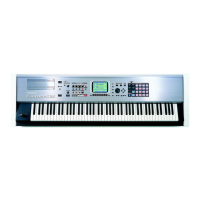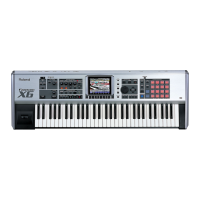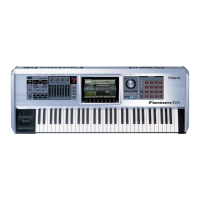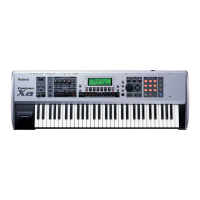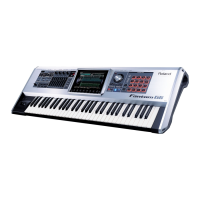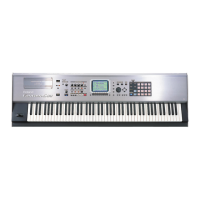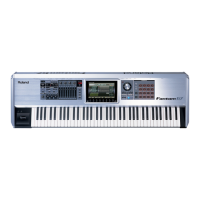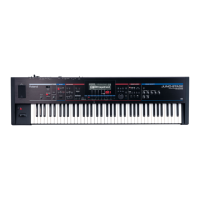6
Playing a Part
Each of the sound generator’s 16 instruments in Performance
mode is called a “part.” You can select any patch or rhythm set
for any part. Each part’s settings determine the behavior of its
sound.
By default, each of the 16 parts plays the MIDI data on the
same-numbered channel. Part 1 plays MIDI Channel 1’s data,
Part 2 plays MIDI Channel 2’s, and so on.
You can change the MIDI channel to which a part is assigned. While we
recommend you don’t do this as you’re learning the Fantom-X sequencer, it
can be a handy thing to be able to do, as we’ll see.
The Contents of a Performance
A complete set of 16 parts is contained in a framework called
a “performance.” A performance stores all of its parts’ settings
and other important song-related items, as shown above.
To learn about the Fantom-X effects, see the Workshop series booklet The
Fantom-X Effects
.
You can save a song’s performance—the song’s setup, really—
along with the song in a Fantom-X song file, as we’ll see.
Performances are also important when playing live, since they allow you
to split the Fantom-X keyboard, and to layer sounds, as described in the
Workshop series booklet Performing with the Fantom-X. That’s also where
you can learn how to save a performance all by itself.
Getting Into Performance Mode
Enter Performance mode in either of two ways. Press:
• LAYER/SPLIT—to display the Performance Layer screen
on which you can select stored performances. The screen
is optimized for the creation of splits and layers when
you’re playing the Fantom-X onstage. The Performance
Layer screen is discussed in detail in the Workshop series’
booklet Performing with the Fantom-X.
• MIXER—to display the currently selected performance’s
Performance Mixer1 screen. Once you’ve selected the
performance you want to start with, this is where you’ll
customize it for use in your song.
Much of what you’ll do when you set up and tweak a performance can be
done from either the Performance Layer or Performance Mixer1 screen.
The Performance Mixer1 screen is more studio-like—that’s why we’ll be
primarily using this screen in this booklet about recording.
MIDI Channels and Fantom-X Tracks
Each track can contain data for all 16 MIDI channels. Though
smooshed together on one track, each data stream remains
separate, and the Fantom-X provides all you need for recording
and editing each channel’s data individually. The Track View
screen—which we’ll discuss later—lets you see multiple MIDI
channels’ data recorded in a track.
Each MIDI channel’s data is played by the part assigned to that channel.

